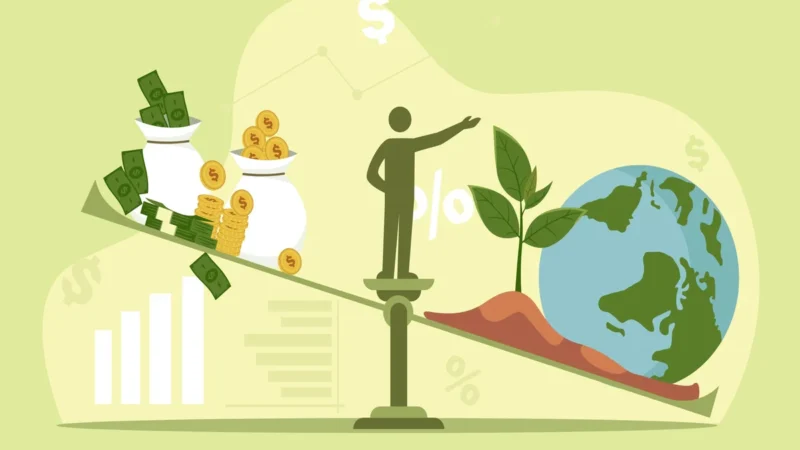Creating a Circular Economy for Plastic Waste: A Sustainable Solution for a Global Challenge

Plastic waste has emerged as a pressing global challenge, with detrimental effects on our environment. Adopting a circular economy approach offers a sustainable solution to address this issue. This article explores the concept of a circular economy for plastic waste, its benefits, and the steps involved in its implementation.
Understanding the Circular Economy
A. Definition and Principles: The circular economy aims to move away from the traditional linear “take-make-dispose” model and instead emphasizes recycling, reusing, and reducing waste. Its principles include designing products for durability, recycling materials, and promoting resource efficiency.
B. Benefits of a Circular Economy: By implementing a circular economy for plastic waste, we can reduce dependence on virgin resources, minimize pollution, and decrease landfill waste. It also creates new economic opportunities, promotes innovation, and mitigates the environmental impact of plastic production.
Challenges of Plastic Waste
A. Environmental Impact: Plastic waste poses severe threats to ecosystems, marine life, and human health. It contributes to ocean pollution, disrupts marine ecosystems, and releases harmful chemicals during decomposition.
B. Limited Recycling Rates: Current recycling systems struggle to manage plastic waste effectively, leading to low recycling rates and a significant amount of plastic ending up in landfills or as litter. This highlights the need for a circular economy approach to increase recycling and reduce waste.
Implementing a Circular Economy for Plastic Waste
A. Designing for Circularity: The first step involves designing plastic products with recyclability in mind, using fewer and more sustainable materials, and eliminating single-use plastics.
B. Establishing Recycling Infrastructure: Investing in efficient recycling infrastructure, such as sorting facilities and recycling plants, is crucial to ensure proper collection, processing, and recycling of plastic waste.
C. Promoting Extended Producer Responsibility: Holding manufacturers accountable for the entire lifecycle of their products encourages them to design for recyclability, take responsibility for waste management, and invest in recycling technologies.
D. Educating and Engaging the Public: Raising awareness about the importance of plastic waste management and encouraging responsible consumer behavior through education campaigns and initiatives is vital for the success of a circular economy.
Key Takeaways:
Transitioning to a circular economy for plastic waste is a necessary step towards achieving a sustainable future. By implementing the principles of a circular economy, we can mitigate the environmental impact of plastic waste, conserve resources, and create a more resilient and efficient system that benefits both the environment and the economy.
FAQs about Circular Economy
Q: What is a circular economy?
A: A circular economy is an economic system that aims to minimize waste and keep resources in use for as long as possible. It promotes recycling, reusing, and reducing waste by designing products with recyclability in mind and establishing effective recycling systems.
Q: Why is a circular economy important for plastic waste?
A: Plastic waste poses significant environmental challenges. By adopting a circular economy approach, we can reduce the environmental impact of plastic production, decrease pollution, conserve resources, and create a more sustainable future for our planet.
Q: How does a circular economy benefit the environment?
A: A circular economy helps reduce plastic pollution, as it focuses on recycling and reusing plastic materials instead of disposing of them. By keeping plastic in circulation, we can minimize its negative impact on ecosystems, wildlife, and human health.
Q: What role do consumers play in a circular economy for plastic waste?
A: Consumers have a crucial role to play in a circular economy. By making conscious choices such as reducing single-use plastics, recycling properly, and supporting companies that prioritize sustainability, consumers can drive demand for circular practices and contribute to a more sustainable plastic waste management system.
Q: How can businesses contribute to a circular economy for plastic waste?
A: Businesses can contribute by adopting sustainable packaging solutions, designing products for recyclability, and investing in recycling infrastructure. Embracing extended producer responsibility and actively seeking innovative ways to reduce plastic waste can help businesses transition to a circular economy model.
Q: What challenges are associated with implementing a circular economy for plastic waste?
A: Challenges include the need for improved recycling infrastructure, consumer education and behavior change, and incentivizing businesses to adopt circular practices. Overcoming these challenges requires collaboration between governments, industries, and consumers.
Q: How can I personally contribute to a circular economy for plastic waste?
A: You can make a difference by reducing your consumption of single-use plastics, recycling diligently, supporting businesses that prioritize sustainability, and advocating for policies that promote a circular economy. Every small action counts towards creating a more sustainable future.


